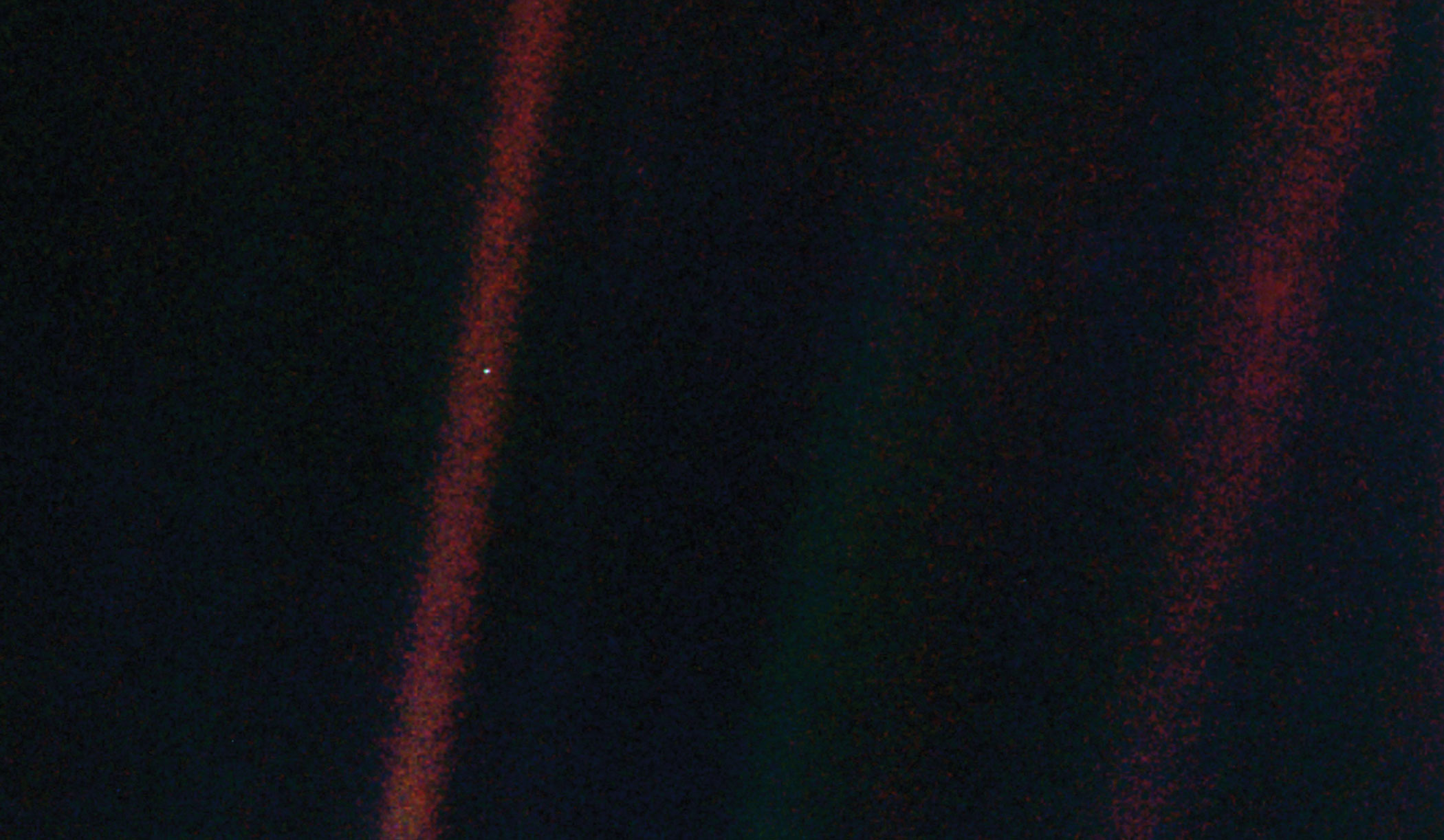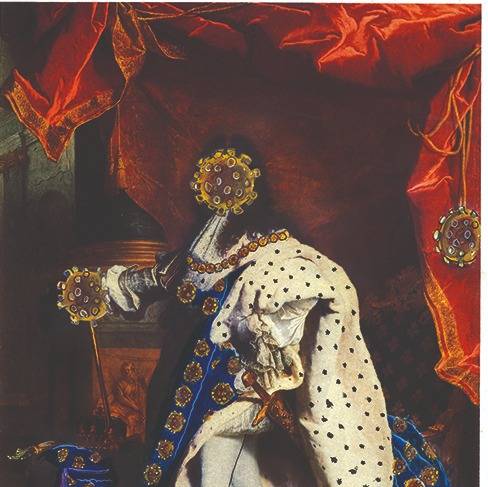
By 1980, NASA’s Voyager 1 spacecraft had finished its mission to fly past Jupiter and Saturn and photograph their clouds and moons. It was 6.1 billion kilometres from the Earth, way beyond the outermost planet and heading for the stars.
For years, the American astronomer Carl Sagan had been urging NASA to turn the Voyager cameras around and look back the way it had come. Finally, he got his way. In February 1990, the cameras were turned back towards the Sun, and captured this image.
The coloured bands are artefacts, created by light bouncing around inside the Voyager camera. The important thing is the dot (in the middle of the red band on the left).
It’s only 1 pixel. But that’s where you and I are. It’s where 7 billion other human beings are today. It’s where all of human history has been played out. In fact, it’s where the entire history of life has been played out. The blue dot is of course the Earth. In fact, it’s the most distant image ever taken of our planet.
How about, in 2012, we all remember we’re on this dot together?
And another thought. We live in a Universe where there about 100 billion galaxies like our Milky Way. And they contain about 10,000 billion billion stars – and probably a similar number of planets. In fact, there are more planets than there are sand grains on all the beaches on all the coastlines on Earth.
And yet in all that immensity there is only one place we know of where life exists.
This tiny, fragile blue dot.
Marcus Chown’s latest books are Tweeting the Universe and Solar System, both published by Faber

